#Casco Histórico de Santillana del Mar
Text
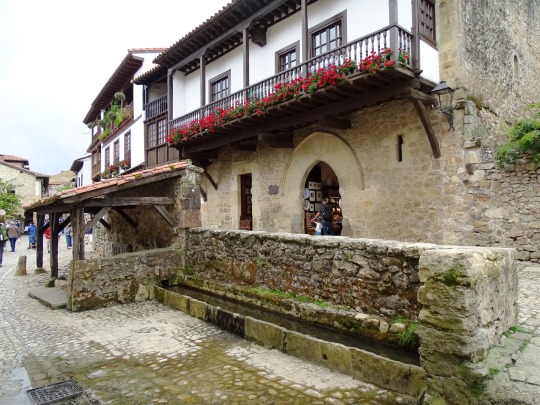
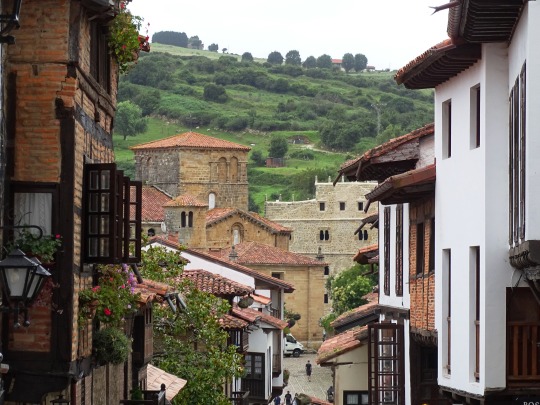

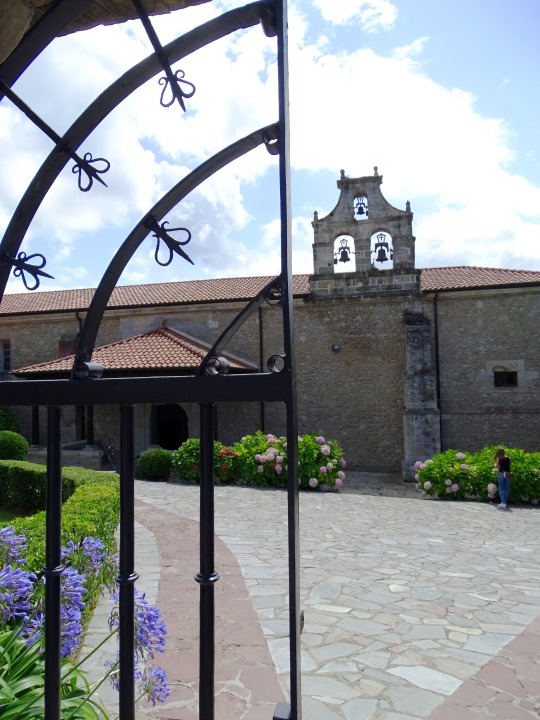


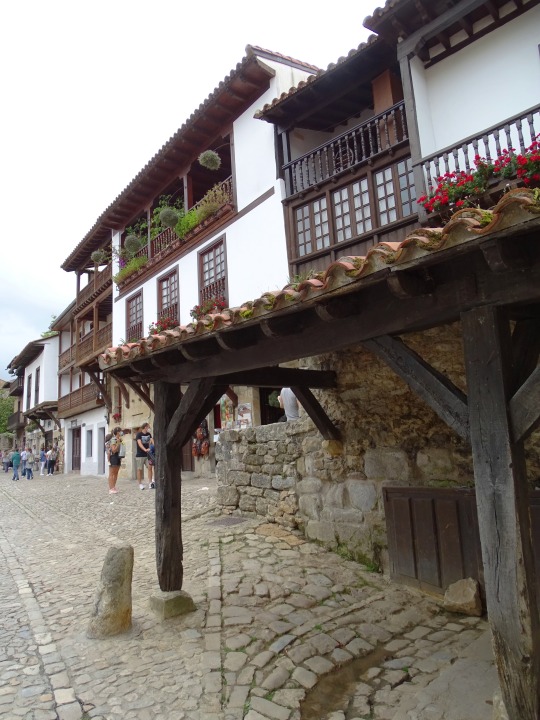
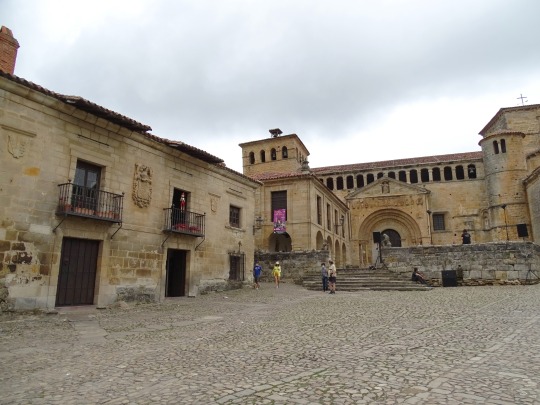


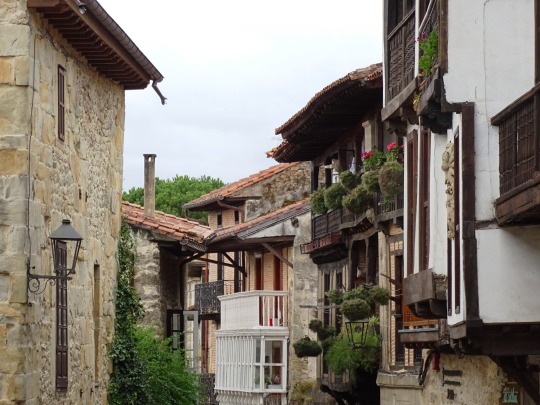
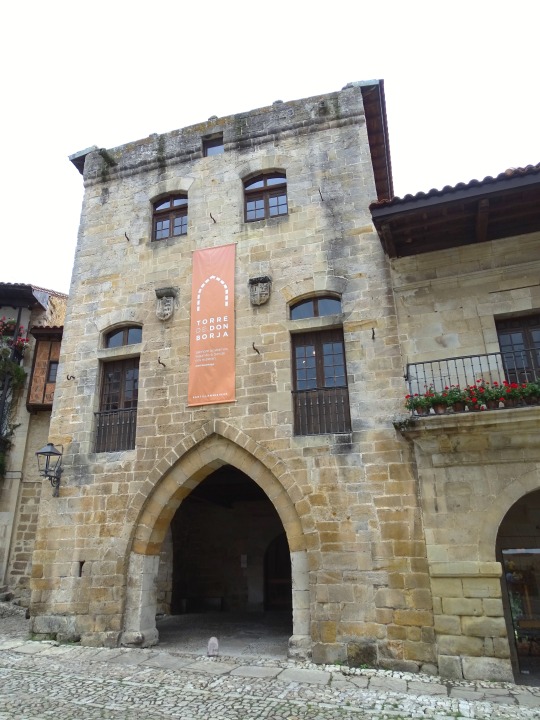
The Villa de Santillana del Mar was declared a Historic-Artistic Site by Decree of July 27, 1943.
#Villa de Santillana del Mar#Historic-Artistic Site#27 July 1943#80th anniversary#Casco Histórico de Santillana del Mar#Cantabria#Northern Spain#España#Spain#Southern Europe#summer 2021#original photogrpahy#tourist attraction#landmark#Spanish history#pedestrian zone#old town#architecture#cityscape#alley#Santillana del Mar#original photography
41 notes
·
View notes
Text
Pueblos bonitos de Cantabria
Nuevo artículo publicado en https://www.absolutviajes.com/pueblos-bonitos-de-cantabria/
Pueblos bonitos de Cantabria
A la hora de decidir entre los pueblos bonitos de Cantabria tenemos un gran dilema. Más que nada porque todos los que componen esta zona, nos encantan. Es por ello que haremos una selección de los que están considerados como los más bonitos, sin querer dejar de lado a ninguno de los demás.
La gran mayoría combina los espacios naturales con monumentos y rincones de interés, llenos de tradición y leyendas. Si estás pensando en darte un buen capricho en forma de vacaciones, ya tienes una perfecta excusa para descubrir los pueblos bonitos de Cantabria, porque te van a enamorar a primera vista.
Santillana del Mar, entre los pueblos bonitos de Cantabria
Sin duda, Santillana del Mar es uno de esos pueblos bonitos de Cantabria. Aunque es uno de los más mentirosos por esas tres mentiras que se denotan de su nombre: No es Santa, ni llano ni tiene mar. Aún así, tiene todo ese encanto que enamora. Está rodeado de colinas y acantilados, en plena naturaleza. Su casco histórico gira entorno a dos calles que son principales y cada una de ellas nos llevará a una plaza totalmente representativa. Allí podremos visitar la Colegiata de Santa Juliana, así como el Torreón de Don Beltrán de la Cueva sin olvidarnos de las Cuevas de Altamira que forma parte del Patrimonio Mundial. No te pierdas tampoco el Palacio de Viveda o el Palacio de Mijares.
Potes
Justo en el lugar donde confluyen dos ríos, ahí se encuentra Potes. Otro de los pueblos bonitos de Cantabria que no te puedes perder. La Villa de Potes tiene la categoría de conjunto histórico y en ella podrás darte un paseo por sus calles empedradas, disfrutando de rincones como la Torre del Infantado, que es una fortificación. La Iglesia de San Vicente es otro de los lugares a tener en cuenta.
Castro Urdiales
En este caso pasamos a un municipio costero que cuenta con restos de la época prehistórica, en forma de pinturas rupestres. Además, también la época romana y la medieval todavía están muy presentes en una zona como es Castro Urdiales. De estilo gótico nos encontramos con la Iglesia de Santa María de la Asunción. El castillo de Santa Ana es una fortaleza que se ubica junto al puerto. No nos olvidamos el Castillo-Observatorio de estilo neo-gótico, con pórtico de columnas y detalles de estilo griego.
Comillas
Una de las grandes características que nos vamos a encontrar en Comillas, es que está formado por edificios de tipo medieval así como barrocos. Ya partiendo de esto, sabemos que estaremos ante toda una gran belleza digna de ser explorada. Uno de los edificios de ‘Bien Cultural’ que nos encontramos es El Capricho de Gaudí, donde los mosaicos con girasoles son los verdaderos protagonistas. Aquí destacamos también la Antigua Universidad Pontificia, así como el Palacio de Sobrellano, con estilo neo-gótico. Dispone de zona arqueológica, como es la Cueva de la Meaza. Como edificio barroco, la Iglesia de San Cristóbal.
Bárcena Mayor
Cuando hablamos de otro de los pueblos bonitos de Cantabria, se nos viene a la cabeza, Bárcena Mayor. Es uno de los pueblos más antiguos y cuenta con una arquitectura montañesa especial que además, se sumó al conjunto histórico-artístico de 1979. Aunque es cierto que en los 90 el pueblo se preparó para el turismo y el algunas zonas perdió parte de su encanto. Aún así, es otro de los lugares que necesitamos visitar.
San Vicente de la Barquera
Seguro que su nombre te suena y mucho. Primero porque se trata de otro de los pueblos más bonitos y segundo, por ser el que vio nacer al cantante Bustamante. Se trata de una de las villas más conocidas y populares, donde puedes adentrarte en la Puebla vieja que es un conjunto histórico. Además, no te puedes perder la Iglesia de Santa María de los Ángeles, el antiguo convento de San Luis o el Castillo de San Vicente de la Barquera.
Cartes
Otro de los rincones de Cantabria que bien merece la pena descubrir. Aquí podemos disfrutar de la Iglesia de Santa María, una iglesia románica. Sin olvidarnos del conjunto histórico de Riocorvo, que es una localidad de Cartes, junto al río Besaya. Claro que un paseo por la Villa de Cartes también nos traslada a otro tiempo y aquí destaca el Torreón de Cartes.
Laredo
El municipio de Laredo es otro de los pueblos bonitos de Cantabria, sin duda. Los puntos de interés están en La Iglesia de Santa María de la Asunción que es el edificio medieval más importante del lugar. El conjunto arquitectónico o ‘Puebla vieja’, está compuesto por seis calles, donde hay numerosos patrimonios en forma de ermitas o casonas que bien merece la pena conocer.
Carmona, otro de los pueblos bonitos de Cantabria
No, no nos hemos ido al sur sino que también en Cantabria nos encontramos con un lugar de nombre Carmona. Sus casonas con la arquitectura clásica de las casas montañesas, que nos envuelven con su belleza. Se puede decir que tiene esas pinceladas tradicionales que tanto gustan. Por lo que sería otro de los pueblos a visitar en nuestro paso por Cantabria.
0 notes
Text
A dónde ir de vacaciones en España
España es un país europeo que se caracteriza por tener diferentes ambientes. Por un lado tenemos zonas muy cosmopolitas, llenas de corporaciones, edificaciones, gente y movimiento en general. Tenemos también pueblos más silenciosos de pescadores y campesinos, lugares con gran cantidad de monumentos de inigualable valor histórico y cultural y espacios playeros donde la vida nocturna y el goce se apoderan de los turistas. Hay para elegir de acuerdo a tus gustos, así que te damos unas recomendaciones a continuación para que sepas a dónde ir de vacaciones en España.
Selecciona a dónde ir de vacaciones en España de acuerdo a tus gustos
Para gustos culturales
Madrid es la ciudad con uno de los cascos históricos más importantes del país, así que podrás disfrutar de infinidad de monumentos, estatuas y arquitecturas. De igual forma podemos encontrar el Museo del Prado y el Palacio Real allí, dos patrimonios reconocidos a nivel mundial. Otras ciudades por el mismo estilo son Barcelona, Salamanca, Santiago de Compostela, Santillana del Mar, Córdoba, Obanos, Zaragoza, Ávila, Granada y Mérida.
Para gustos playeros y deportivos
San Sebastián se destaca por su ambiente playero y deportivo. Ezcaray es un sitio tranquilo ideal para los deportistas de montaña, los cuales no solo podrán disfrutar de estas actividades físicas sino también visitar sus monumentos medievales enmarcados en los paisajes boscosos. Otras ciudades por el mismo estilo son Cuenca, Tenerife, Valencia, Islas Canarias, Ibiza y Andalucía.
Para gustos festivos y comerciales
Sevilla destaca por destilar alegría en todas sus calles, tener gran cantidad de parques temáticos, cines y teatros. Muchas de sus fiestas han sido declaradas Interés Turístico Internacional, como las realizadas en Semana Santa, por ejemplo. En Valencia también podrás encontrar gran movimiento comercial y de diseño, así como en Barcelona. Otras ciudades por el mismo estilo son Bilbao, Ibiza y Madrid.
Para gustos gastronómicos y musicales
Si quieres disfrutar de la buena comida te recomendamos Toledo, Capital Española de la Gastronomía. En San Sebastián también se destaca la gastronomía vasca, fundida entre los paisajes de playa. Valencia es una ciudad que también destaca por su cultura, música y teatro. Otras ciudades por el mismo estilo son Madrid, Cáceres, La Rioja, Galicia, Andalucía y Segovia.
Elegir a dónde ir de vacaciones en España puede ser una tarea difícil, ya que es un país que vive del turismo y cada ciudad tiene algo especial para ofrecer. Sin embargo, hay algo muy particular en cada una de sus ciudades, y es que si son playeras por ejemplo, también tienen algunos monumentos históricos de interés. Si son ciudades culturales, hay locales nocturnos con buena comida para descubrir. Todo está interconectado para ofrecerle al turista la mejor experiencia posible, independientemente de lo que busque.
La entrada A dónde ir de vacaciones en España aparece primero en - Visitando España.
from – Visitando España http://ift.tt/2rQLQrh
0 notes
Text
Seis rutas como un castillo
Fuente original: Seis rutas como un castillo
Puedes ver más visitando Teleindiscreta - Las mejores noticias de actualidad, famosos, salud, belleza, cocina, motor, música y mucho más.
Entre sus gruesos muros se han diseñado batallas, firmado tratados y celebrado fiestas y gestas, los castillos se esparcen por toda la geografía española como testigos de épocas pasadas que de cuento apenas tienen sus bonitas formas arquitectónicas.
A menudo estratégicamente situados sobre una atalaya, sus murallas y fosos los convertían en baluartes infranqueables y en una perfecta torre de vigilancia para controlar al enemigo. En tiempos de paz y sin adversario al que combatir, fueron residencia de nobles y familias de rancio abolengo.
Hoy forman parte de itinerarios turísticos que merece la pena visitar. ¡Ah del castillo! ¿Nos siguen?
El Alcázar de Segovia es uno de los castillos medievales mejor conservados y más suntuosos de España. Se construyó sobre una roca y en la confluencia de los ríos Eresma y Clamores. De allí partió Isabel la Católica camino de la iglesia de San Miguel para ser coronada y en su capilla se casaron Felipe II y Ana de Austria.
El edificio, de estilo gótico, data del siglo XII y fue reformado varias veces. En su construcción se proyectaron numerosos pasadizos secretos que bajan hasta el río y comunican con algunos palacios de la ciudad. A destacar, la sala del trono que conserva intacta su decoración mudéjar original.
La silueta del Alcázar es lo más parecido a un castillo de cuento y dicen que inspiró a Disney para el palacio de la Cenicienta. Visita: 5,50 euros y otros 2,50 para acceder a la torre de Juan II.
Un plan. No se puede ir de Segovia sin recorrer su casco histórico, con el majestuoso acueducto romano, la calle Real, la Casa de los Picos, con sus características puntas de diamante en la fachada, la iglesia románica de San Martín y la catedral gótica de Santa María. Entre monumento y monumento, dese un homenaje y disfrute del celebre cochinillo de Segovia asado en horno tradicional.
La más bella vista en 360º
A tres kilómetros del centro histórico y a 112 metros de altura sobre el nivel del mar, la fortaleza gótica de Bellver (bella vista), construida como una circunferencia perfecta, domina la bahía de Palma y gran parte la isla, entre un bosque de pinos. Un lugar privilegiado teniendo en cuenta que la ciudad se fue construyendo en un lugar resguardado del clima, fácilmente defendible –salvo por poniente– y bien comunicado para el comercio.
Desde su construcción en el año 1300 sobre un cerro inexpugnable, el castillo ha tenido diversos usos. Residencia de Jaime II, de Juan de Austria y de Juan Carlos I y Sofía; sirvió de prisión y hoy es el museo de la ciudad. Destaca la planta del edificio, circular, con tres torres semicirculares adosadas y una separada unos siete metros del cuerpo del castillo, un fabuloso mirador. Entrada general: 4 euros, gratis los domingos.
Un plan. Con más de 300 preciosas playas y calas, Mallorca es uno de los destinos más exclusivos de sol y playa. Déjese seducir por su casco histórico y sus callejuelas y descubra los bares y pastelerías que solo conocen los locales.
Estos son mis poderes
El castillo de Manzanares el Real (siglo XV) es el más conocido y emblemático de Madrid del que tan solo le separan 46 km. Conocido también como el palacio de los Mendoza, es una auténtica joya renacentista, con románticas vistas al Manzanares, a su paso por el embalse de Santillana, y a la sierra de Guadarrama.
Con la Reconquista casi finalizada, la construcción de este castillo obedece más al afán de transmitir riqueza y poder, los de los Mendoza, una familia noble, que a necesidades defensivas. Su construcción sobre una iglesia románico mudéjar, que se incorpora al edificio y aún se conservan restos, se debe en buena parte al arquitecto de los Reyes Católicos Juan Guas.
La fortaleza es de planta cuadrada, con torres redondas en las esquinas y una torre del homenaje octogonal; consta de un patio porticado, un sótano y seis plantas. A destacar en el primer piso la galería gótica, considerada una auténtica belleza. Entrada general: 5 euros y visita al jardín renacentista, otros 3. No se pierda las visitas teatralizadas por sus estancias y trasládese a otra época.
Un plan. Subirse al tren de Guadarrama y alejarse del ruido de la capital para contemplar la espléndida naturaleza de la sierra de Madrid, distinta en cada estación del año. El tren es un cercanías que enlaza Cercedilla, el puerto de Navacerrada y Cotos, a 2.000 metros de altitud. 17,40 euros ida y vuelta. Precios especiales para adultos con niños.
A por uvas
Desde el cerro donde se ubica el castillo de Peñafiel se dominan tres valles: el del Duero, el del Duratón y el del arroyo de Botijas, una posición defensiva incomparable tanto para cristianos como para musulmanes contra cualquier embestida enemiga. Este peculiar castillo gótico se empezó a construir en el siglo X, tiene una sola puerta y en la imponente fortaleza destaca su torre del homenaje de más de 30 metros de altura coronada por ocho torrecillas. Hoy alberga el Museo Provincial del Vino y recibe más de 100.00 visitas al año. Entrada general: 6,60 euros; grupos: 5, e incluye visita al museo donde se pueden realizar catas o asistir a cursos.
Un plan. No se puede marchar de la Ribera del Duero, donde se producen algunos de los mejores vinos del mundo, sin visitar alguna de sus bodegas, como la de Protos. Su antigua cava recorre el interior de la montaña sobre la que se asienta el castillo. Otro plan es dejarse mimar por la vinoterapia. Lavida Spa Hotel Rural ofrece más de 14 tratamientos derivados de la uva y el vino.
Un real sitio
El Palacio Real de los reyes de Navarra de Olite fue uno de los castillos medievales más lujosos y bonitos de Europa. Sede de la corte del Reino de Navarra, se construyó entre los siglos XII y XIV, allí se celebraban justas y llegó a tener su propio zoológico. Destacan sus ventanales góticos, la puerta principal de estilo renacentista y la torre de la Atalaya. La visita se suele iniciar en el Palacio Viejo –hoy parador de turismo–, seguir por la iglesia gótica de Santa María, la iglesia románica de San Pedro, en la que destaca el claustro y una torre gótica rematada por una aguja, y el Palacio Nuevo.
No se pierda la preciosa galería del Rey. Si quiere viajar a la Edad Media, visite Olite en agosto durante el festival de teatro clásico. Entrada: 3,50 euros.
Un plan. Ir de poteo (tapas) por las calles más famosas de la cercana Pamplona como Estafeta, San Nicolás, San Gregorio o Comedia y disfrutar de los sabrosos pinchos del norte acompañados de una caña, un vino o el típico chacolí, sobre todo si viaja en primavera durante la Semana del Pincho.
Placeres terrenales
El castillo de Peralada, en Girona, fue construido en el siglo XV. Fue comprado en 1923 por Miguel Mateu Pla, que reunió una importante colección de arte. De estilo renacentista, alberga una gran biblioteca con más de 70.000 volúmenes, entre ellos, códices miniados y manuscritos góticos y también es la sede de una importante bodega del mismo nombre, cuya tradición se remonta al siglo XV. En agosto acoge un celebre festival de música. Entrada: 6 euros; grupos: 3,80.
Un plan. Visitar Girona, una coqueta ciudad con sus casas de colores sobre el río Onyar, donde recorrer las calles medievales de su judería, sus baños árabes o la catedral y su escalinata.
Fuente: Cinco días
La entrada Seis rutas como un castillo aparece primero en Teleindiscreta.
from Seis rutas como un castillo
0 notes
Photo

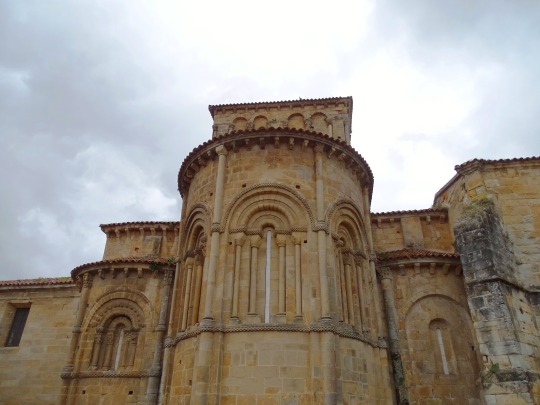
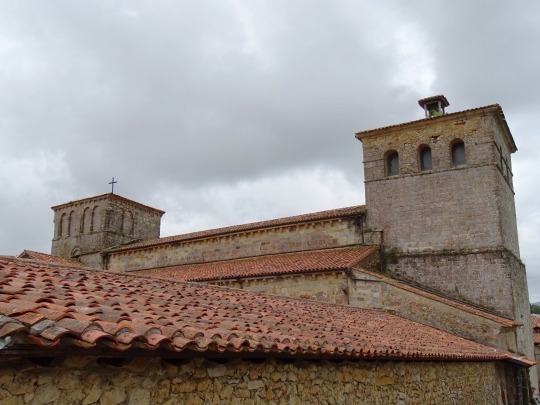



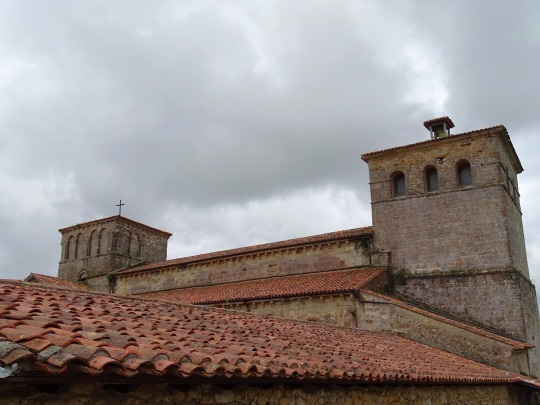
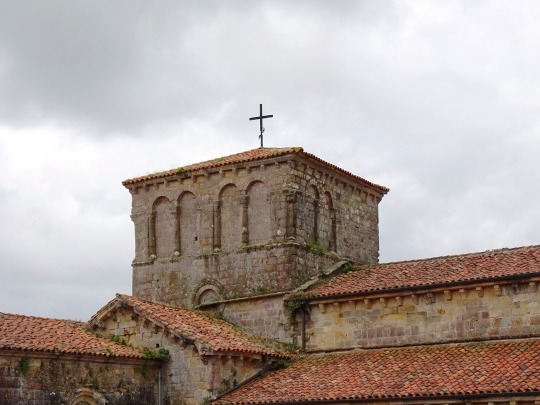
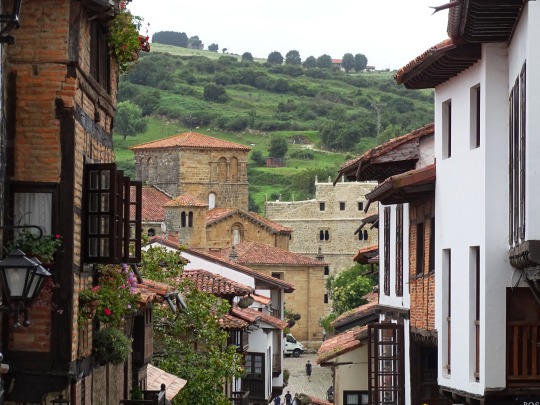
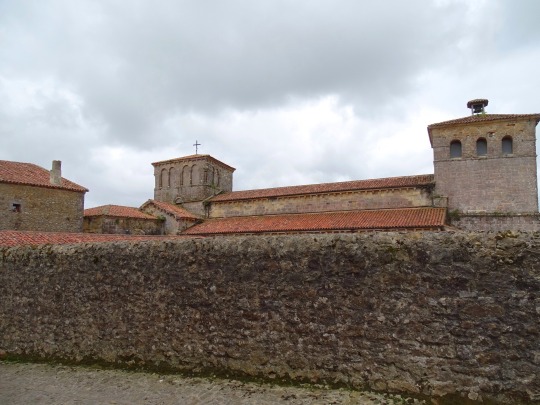
Collegiate Church of St Juliana, Santillana del Mar (No. 2)
The construction scheme responds to that of a church with three naves of four sections and transept, three semicircular apses, a cylindrical tower, and dome over the transept. The set is completed with a cloister and the abbey dependencies. The central nave is wider than the lateral ones and equal to that of the transept, so the transept has a square plan. The arms of the transept do not protrude from the side walls, so that they are not visible to the outside. The heads of the three naves are made up of staggered semicircular apses. At the foot of the main nave stood a square bell tower that on the outside is similar to the one that stands over the transept, giving an image of symmetry to those who observe the church from the southern façade.
In the formal and decorative aspect we must mention the existence of an open main portal on the south side that allows access from the square, and another on the north wall that connects the church with the cloister. As a finish of the first, a triangular pediment with a Renaissance air was arranged in later times, replacing the original Romanesque eaves on corbels; shows a niche containing the image of Saint Juliana in an attitude of subduing the devil. Nor is the gallery of fifteen arches that runs through the upper part of the southern canvas original. The flaring of the façade is formed by smooth adoveled archivolts; Above are aligned a series of quite deteriorated human figures, highlighting in the center a mandorla supported by four angels in which a seated pantocrator is framed.
The covering of the naves is carried out by ribbed vaults, and that of the arms of the transept by barrel vaults; The apses are roofed with oven vaults. Above the transept stands a dome in the form of a square tower inside which, at a lower level than the roof, there is a decentered dome that rests on pendentives.
An element of special interest is the cloister attached in the late twelfth and early thirteenth centuries to the north wall of the church. In a first phase the south wing and a part of the west wing would be raised; already in the thirteenth century this wing would be completed and the north wing would be built. The east side is from later times (sixteenth century) and does not follow the guidelines of the Romanesque style.
The primitive galleries are formed by semicircular arches supported by paired or quadruple columns. In total it has 43 capitals of which the oldest, those on the south side and first section on the west side, are historians with carvings of appreciable merit, while the most recent ones present plant themes.
Source: Wikipedia
#Collegiate Church of St Juliana#Colegiata y Claustro de Santa Juliana#Spain#Romanesque architecture#Santillana del Mar#Casco Histórico de Santillana del Mar#Town of Three Lies#Cantabria#España#Torrelavega#summer 2021#pedestrian zone#old town#cityscape#small town#cobblestone#tourist attraction#landmark#Southern Europe#Northern Spain#alley#original photography
16 notes
·
View notes
Photo

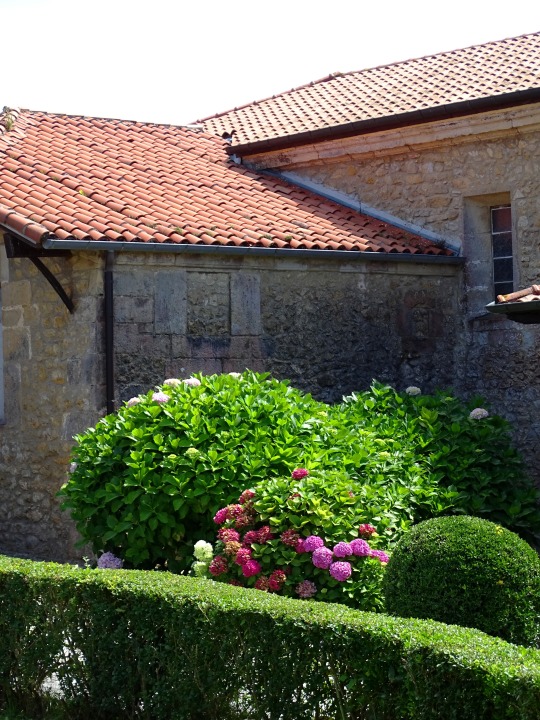
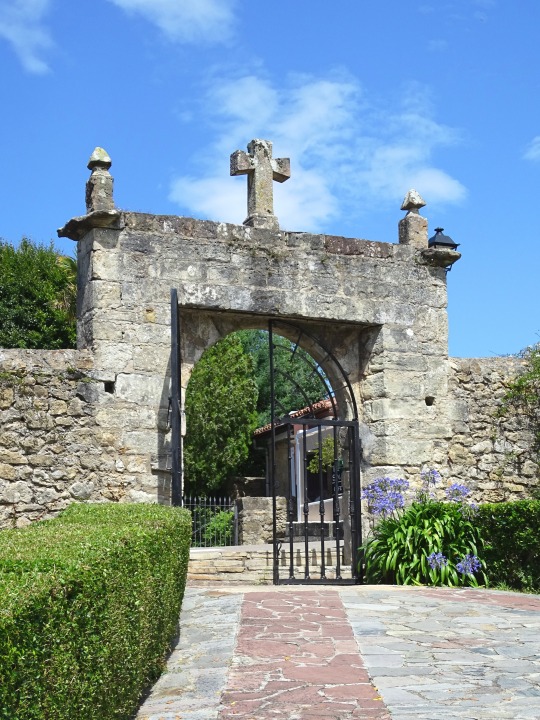

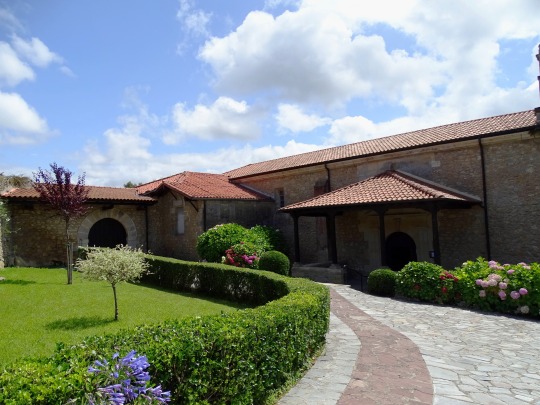
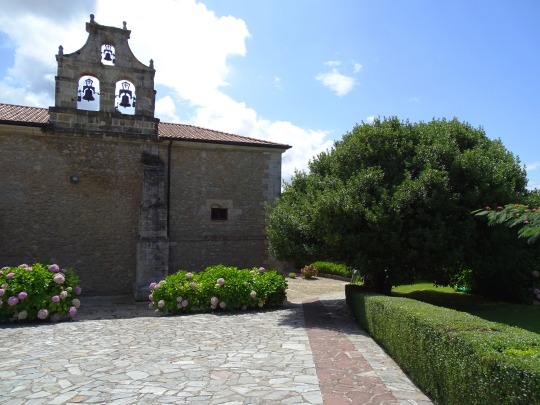
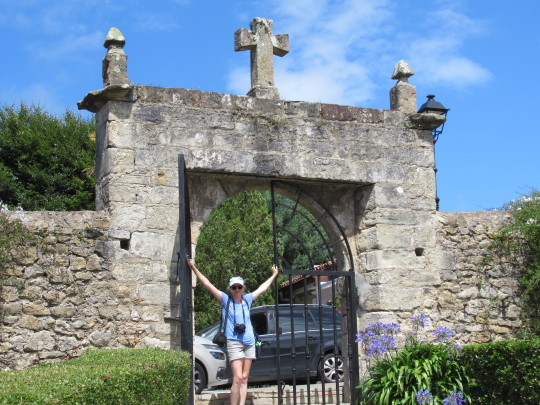

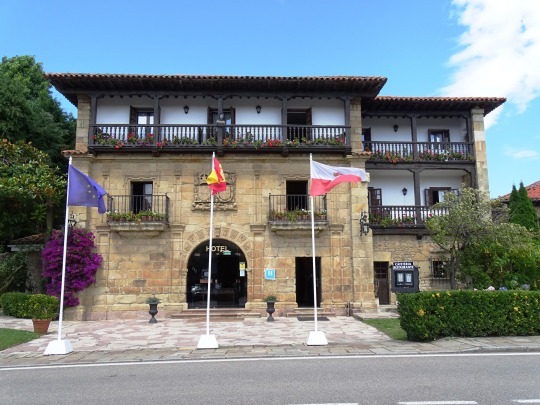
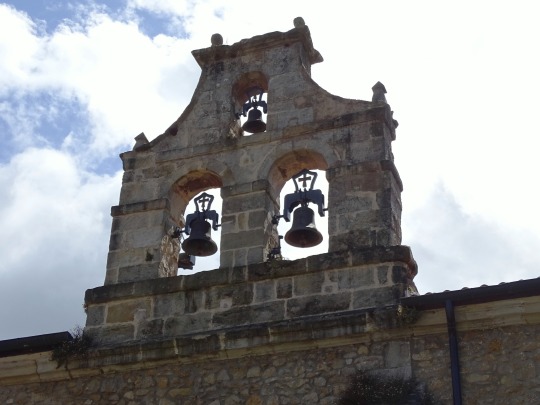
Santillana del Mar, Spain (No. 3)
The place that today occupies Santillana del Mar was called Planes since the Roman conquest, as attested by a Latin document of the year 980: baseleca Sancta Iuliana locum qui dicitur Planes. Plans could come from the Latin planum (clear place between mountains). From that moment the importance of the religious complex exceeded that of the place, and as a result of the belonging it had with the Asturian kingdom, in 1228 it is called Villa de Sancta Illana ("Illana" in Asturian is "Juliana"). It is believed that the current toponym is a derivation of this, to which it was added from the Sea simply because of its proximity to the Bay of Biscay.
Thus, the original name of Sancta Illana is united in the form Santayllana in a document of 1326. In another of 1338 it reads Santillana, and in another more than 1390 Sancta Illana, Sanctayllana, Santyllana and Santillana are used indifferently. In another of 1453 there is only the Santillana form.
Source: Wikipedia
#Religiosas Clarisas Monasterio Regina Coeli#Convent of San Ildefonso#Spain#Convent of the Dominicas#Santillana del Mar#Torrelavega#Cantabria#travel#Town of Three Lies#gateway#flora#original photography#old town#España#Casco Histórico de Santillana del Mar#cityscape#architecture#tourist attraction#landmark#street scene#Northern Spain#Southern Europe#bell#flag#summer 2021
9 notes
·
View notes
Photo
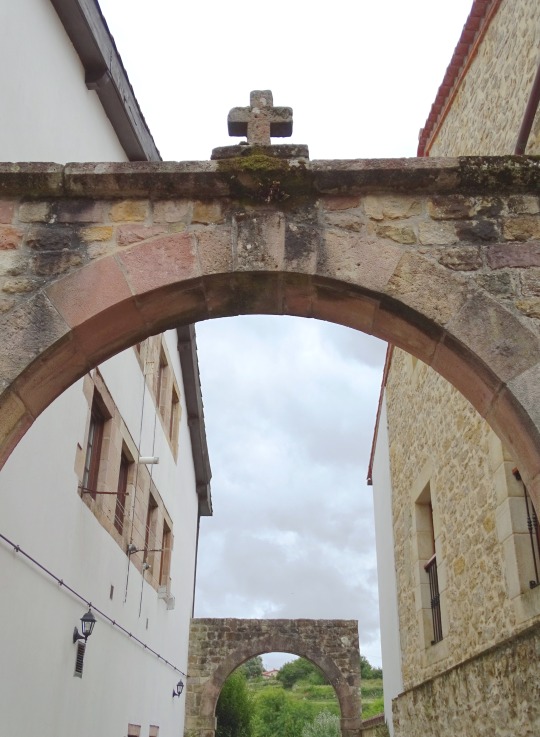

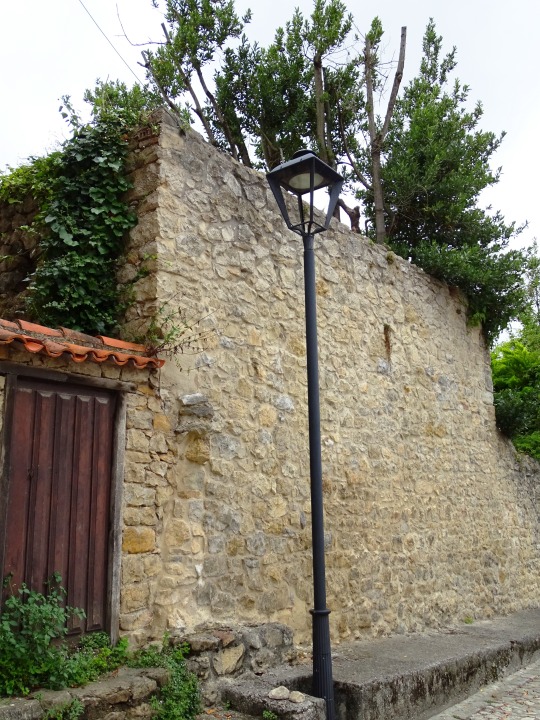




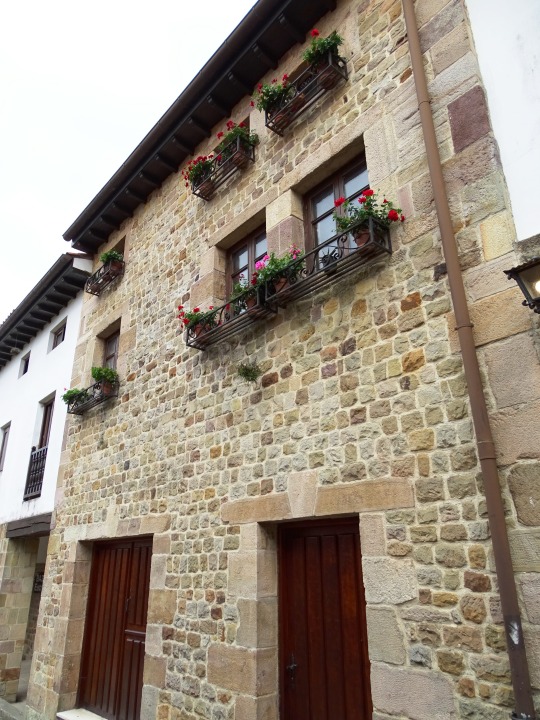


Santillana del Mar, Spain (No. 6)
During the Modern Age, the Asturias de Santillana became part of the jurisdiction of the Corregimiento de las Cuatro Villas , an area then led by Laredo . In 1509 the abbot recognized the III Marquis of Santillana, but only after violent military confrontations, in an attempt to recover religious power over the town. The urban and economic development of the town stagnates during the 16th century when Santillana did not participate in the Lawsuit of the Nine Valleys, important in the history of the institutions that gave rise to Cantabria. As a result, Santillana was administratively marginalized; however, it reappeared in the 17th century thanks to the wealth linked to its participation in the Spanish expansion in Europe and America.
At the end of the 16th century and during the 17th century , most of the houses that are preserved today in Santillana del Mar were built, configuring its nucleus as it exists today. Almost all of them follow the same typology, with two floors, a front open space and a larger rear space originally dedicated to corral, sunrooms or wrought iron or wooden balconies, and noble coats of arms, abundant in the town. Santillana is therefore essentially Baroque , although its
urbanization process remains unknown.
Outside the town were the building complexes of the religious orders built at that time. These were the convent of Regina Coeli of the Dominicans, that of San Ildefonso of the Dominicans, the Hospedería de Peregrinos y Pedestrians , the Hospital de la Misericordia and the Hospital de San Lázaro de Mortera. At the end of the 17th century , the collegiate church of Santa Juliana competed with that of the Holy Corps (in Santander) to obtain cathedral ownership.
Source: Wikipedia
#C. Jesús Otero#Town of Three Lies#Torrelavega#Santillana del Mar#Spain#architecture#Casco Histórico de Santillana del Mar#old town#cityscape#España#Northern Spain#Southern Europe#summer 2021#vacation#travel#tourist attraction#landmark#street scene#cobblestone#alley#Church of the Colegiata in Santillana#flora#flower#nature#Cantabria
7 notes
·
View notes
Photo


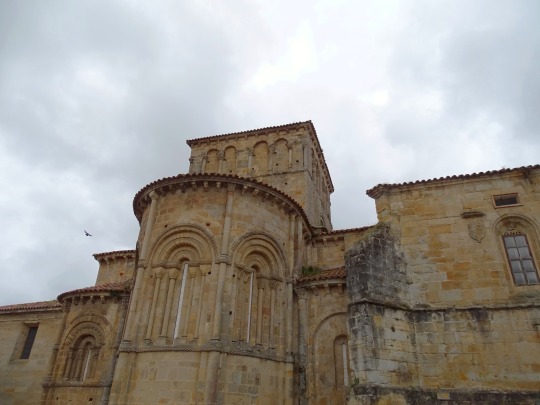

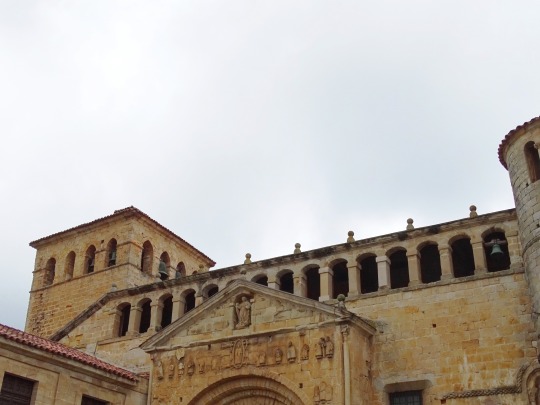

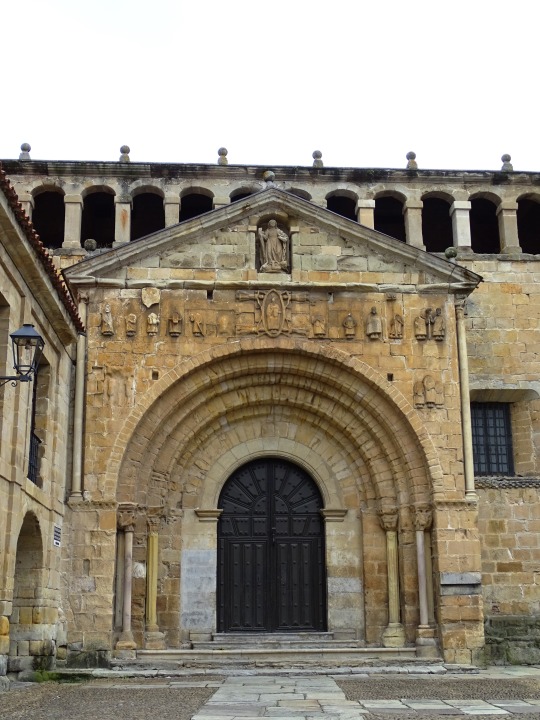


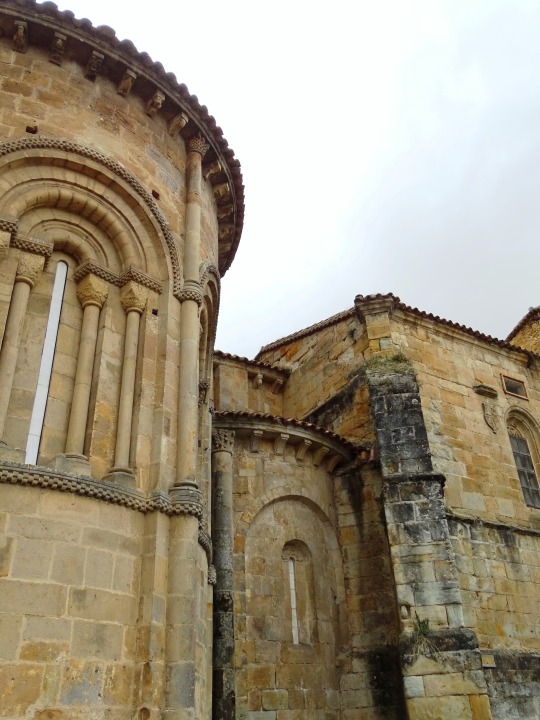
Collegiate church of St Juliana, Santillana del Mar (No. 1)
The collegiate church of Santa Juliana de Santillana del Mar (Cantabria, Spain), to which this Cantabrian town (Sant Iuliana-Santillana) owes its name, is one of the most representative Romanesque monuments of the region. It was declared a National Monument of Spain on March 12, 1889.
In 2015, in the approval by UNESCO of the extension of the Camino de Santiago in Spain to "Caminos de Santiago de Compostela: French Way and Roads of Northern Spain", it was included as one of the individual assets (ref. no. 669bis-012) of the coastal way.
Supposedly the young Juliana of Nicomedia was martyred in Asia Minor (today Turkey) during the persecutions undertaken by Emperor Diocletian at the end of the third century, and her remains brought in the ninth century to this place of the Kingdom of Asturias by some pilgrim monks. At the time of the King of Asturias Alfonso III (documents place it in 870) a hermitage was built under the invocation of the saint where to guard and venerate her relics, and then a monastery that prospered under the protection of the local nobility. It was King Ferdinand I of Castile, in 1045, who gave him the definitive impulse by granting important privileges, one of which was to put under the sovereignty of his abbot the town and its possessions.
The primitive temple was replaced in Romanesque times by which, with various additions and reforms, has been preserved until today, dating from the twelfth century. In its origins it constituted a Benedictine monastery, but in the eleventh century it acquired the rank of collegiate church governed by a community of canons of San Agustín. From then on, backed by noble aid, it became the most important temple in Cantabria.
Source: Wikipedia
#Antigua Casa de los Abades#Collegiate church and cloister of St Juliana#travel#Colegiata y Claustro de Santa Juliana#Romanesque architecture#Cantabria#Collegiate church of St Juliana#Torrelavega#Santillana del Mar#vacation#Casco Histórico de Santillana del Mar#architecture#cityscape#summer 2021#Town of Three Lies#details#bell#tourist attraction#landmark#cobblestone#pedestrian zone#Northern Spain#Southern Europe#España#Spain
5 notes
·
View notes
Photo






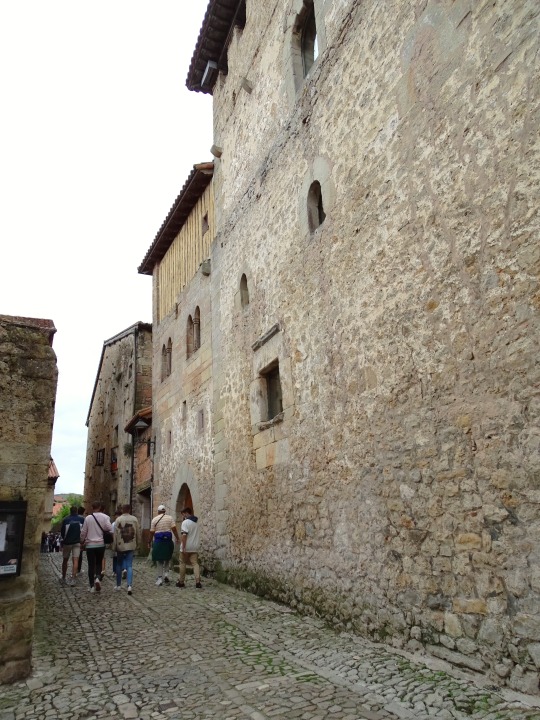



Santillana del Mar, Spain (No. 16)
The Merino tower, also known as La Torrona,is a crenellated Gothic construction located between the civil square -old market square, today Ramón Pelayo de Santillana del Mar (Cantabria, Spain) and Lindas street, probably raised in the late thirteenth century, and remodeled in certain respects in the fourteenth and fifteenth centuries; others point to the initial date of construction as the fourteenth century.
It is believed that it was built by the State for the merino of the Asturias de Santillana, initiating the process of urbanization around the civil square of Santillana as opposed to the religious one, where the collegiate church is. In addition to residence, it fulfilled a military function. The tower belongs to the Barreda Family since its origins. Already in 1927 a fairly careful restoration of it had been executed. It is made of masonry with ashlar corners. It has loopholes, mullioned windows and open windows in more modern periods. Built in stone, the interior structure was originally made of wood, as well as the scaffold, whose remains are still preserved. Formerly it had a barbican, but only the exit holes to it are preserved.
Today the tower is carefully restored, existing a primitive interior structure of wood, and destined to museum. The main contemporary transformation is the conversion of the battlements into windows and the execution of a hipped roof over it, as has happened in many other Spanish crenellated towers. Along with the entire town of Santillana, it is of cultural interest as a historical site.
Source: Wikipedia
#Fundación Santillana#Torre del Merino#Torre de don Borja#La Torrona#travel#Santillana del Mar#Casco Histórico de Santillana del Mar#España#Town of Three Lies#pedestrian zone#cobblestone#street scene#alley#detail#lantern#old town#cityscape#architecture#summer 2021#vacation#Spain#Northern Spain#Southern Europe#original photography#tourist attraction#landmark#Cantabria#Torrelavega
5 notes
·
View notes
Photo

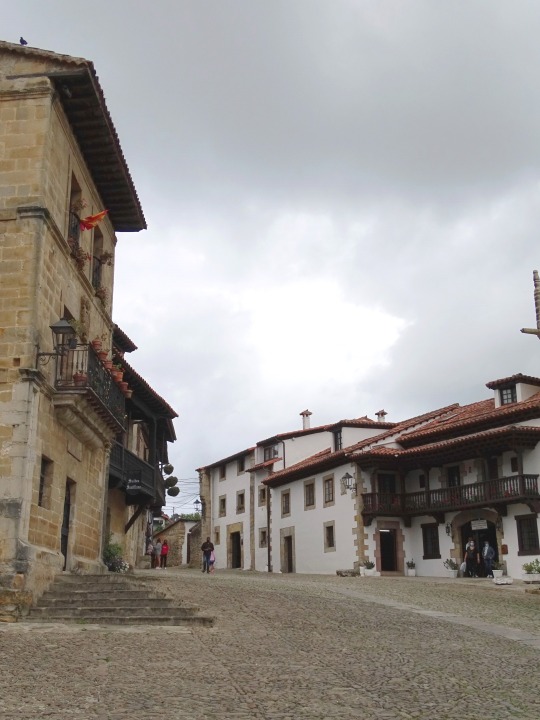
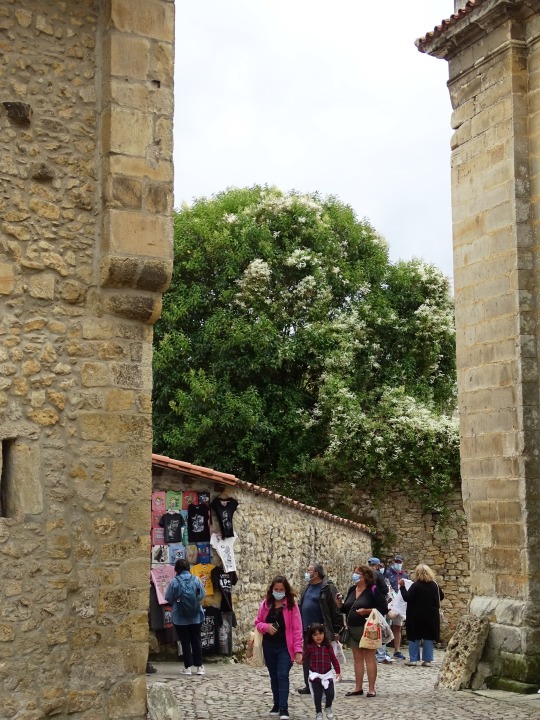
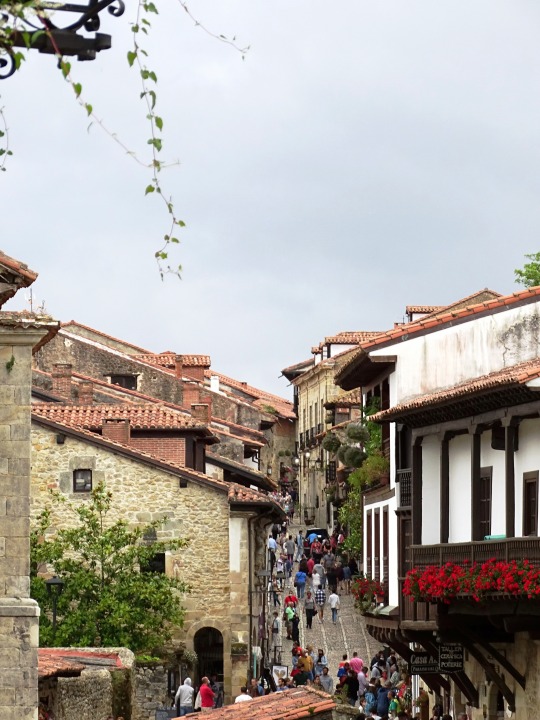



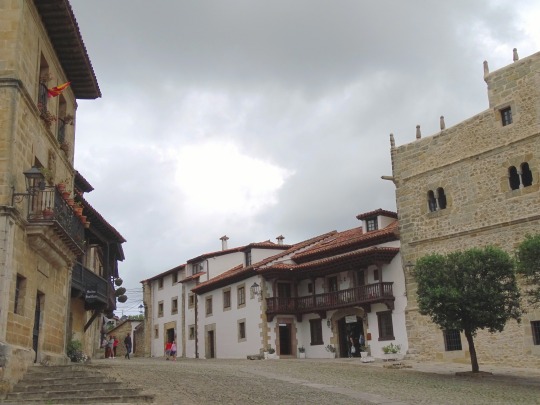
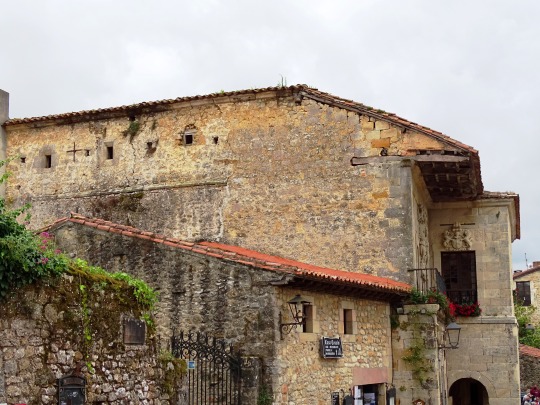
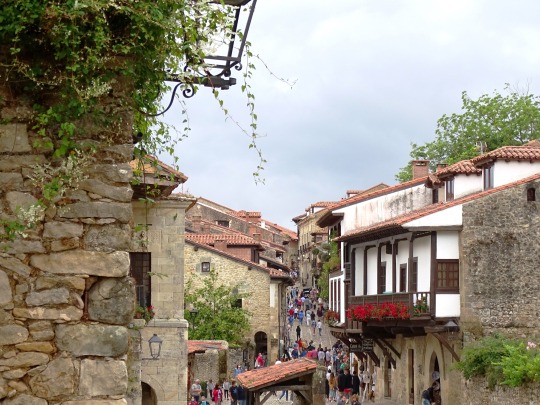
Santillana del Mar, Spain (No. 11)
The historic center of Santillana del Mar, which is almost the same as saying all of it, is organized around two main streets that end up in two squares. The first of the streets takes different names (Carrera, Canton, and del Río) and will give to the religious square, the first center of the town, which gives access to the collegiate church. This is divided in turn into two: in front of the collegiate church the Plaza del Abad Francisco Navarro, and on its east side the Plaza de las Arenas. When Santillana obtained the capital of the Merindad de las Asturias de Santillana, there was a demographic increase and the need for a merino. Thus a second square was formed around the fourteenth century, initially called the market because it was held there since a charter of 1209 allowed it; to this gives, among other constructions, the Torre del Merino (today a museum) and that of Don Borja, which currently serves as a town hall. The street that crosses the town to it is called Juan Infante.
Source: Wikipedia
#Santillana del Mar#Casco Histórico de Santillana del Mar#Torrelavega#Spain#Cantabria#architecture#cityscape#old town#tourist attraction#landmark#original photography#summer 2021#flora#tree#street scene#alley#cobblestone#Northern Spain#Southern Europe#España#travel#vacation#roofs#Town of Three Lies
5 notes
·
View notes
Photo

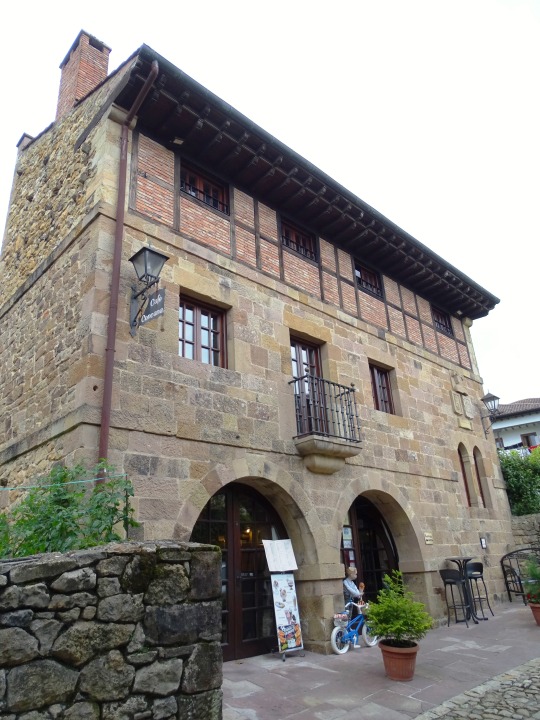




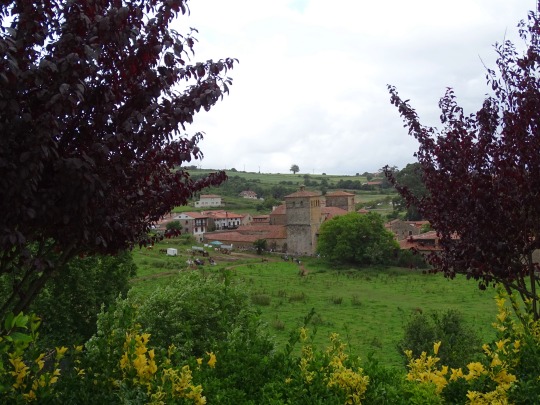

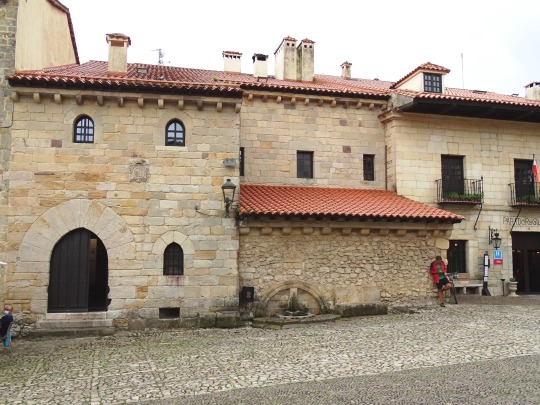

Santillana del Mar, Spain (No. 17)
Casa de los Hombrones or Casa de los Villa. It is located next to the so-called house of Leonor de la Vega, on Canton Street. It is a house built between the xv and the xvii. It was given this name by the two mustachioed knights who hold the huge baroque shield of the façade, coat of arms of the Villa.
House of Polanco and Lasso de la Vega or House of Leonor de la Vega. It is located on the street of the canton. It is from the late fifteenth and early sixteenth centuries built by Juan de Polanco. According to tradition, Leonor de la Vega, mother of the first Marquis of Santillana, lived in this building. On the façade you can see three Gothic shields of the Polanco-Lasso de la Vega alliance.
Torre del Merino or La Torrona. It is located in the old market square, today Ramón Pelayo. It is a tower of the fourteenth century, topped by battlements. It is so called because it is the place where the merino, an official who represented the king, dwelt.
Torre de don Borja or Santillana Foundation. It is in the Plaza de Ramón Pelayo. Although it must have had medieval origin, the part preserved and restored seems to be from the late fifteenth or early sixteenth century. On the sides of the parapet is a shield with the coat of arms of the Barreda. It has an interior courtyard that joins the two volumes. It owes its name to Don Francisco de Borja Barreda, last descendant of the Barreda in the nineteenth century. Among its later owners was the Infanta Paz de Borbón. In 1981 it was restored to be the headquarters of the Santillana Foundation.
Source: Wikipedia
#Casco Histórico de Santillana del Mar#Santillana del Mar#Cantabria#España#Torrelavega#Town of Three Lies#pedestrian zone#landscape#cityscape#travel#vacation#old town#summer 2021#original photography#landmark#tourist attraction#Southern Europe#Northern Spain#cobblestone#street scene#alley#flora#nature#lantern#window#balcony#roof
3 notes
·
View notes
Photo
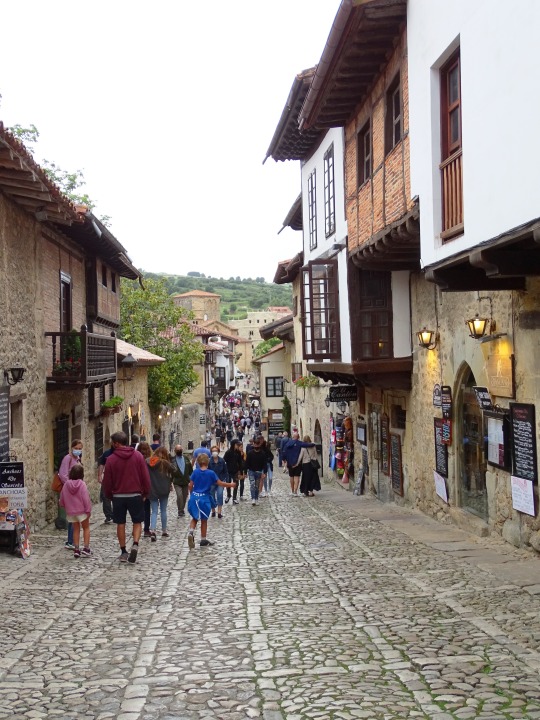
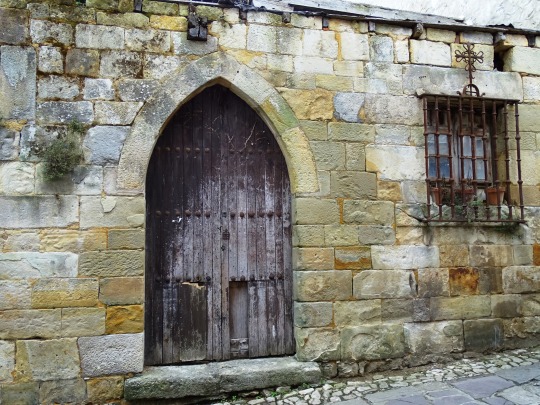

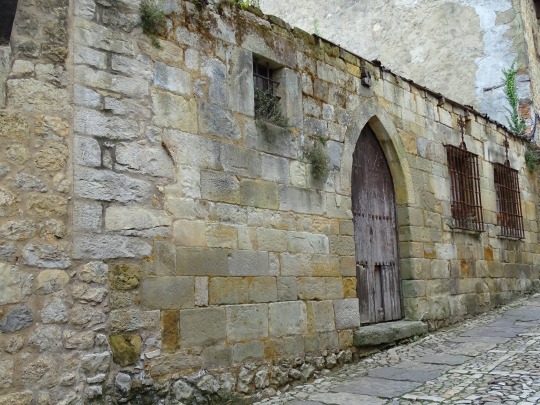




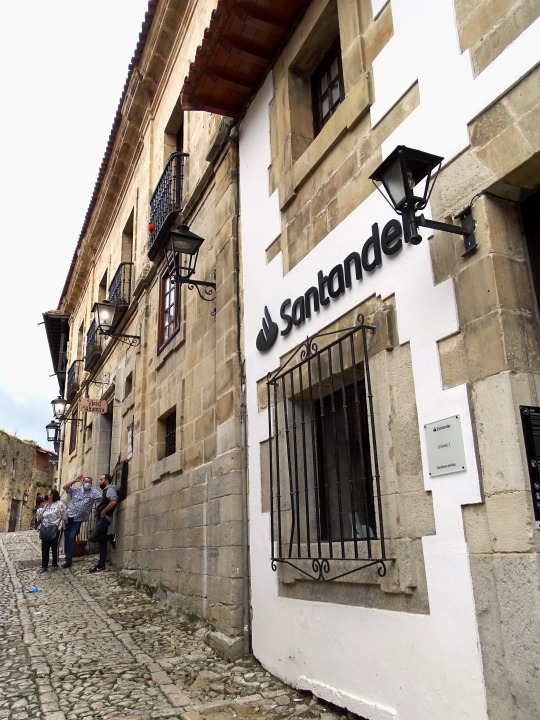
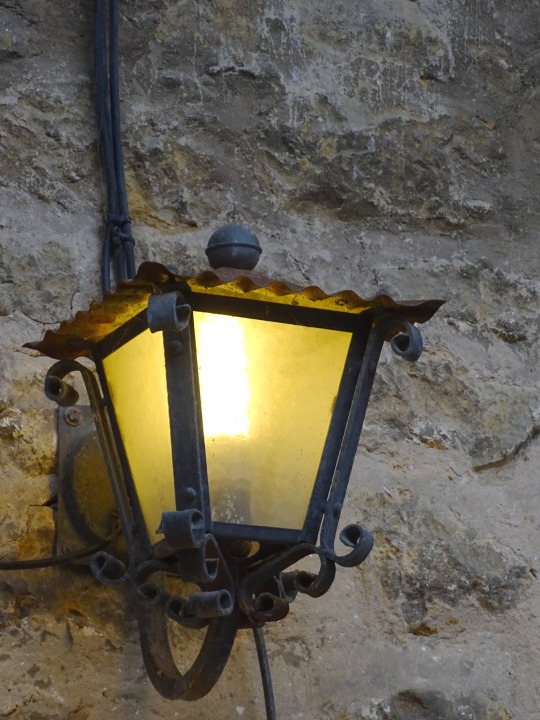
Santillana del Mar, Spain (No. 14)
The Villa de Santillana del Mar is all of it a Historic-Artistic Site by Decree of July 27, 1943 (BOE of August 3). The historic center is formed by homogeneous stone constructions, mostly from the fourteenth to the eighteenth centuries. The hamlet was developed around a road, Santo Domingo Street, which forks in two: Juan Infante Street, which reaches the Plaza de Ramón Pelayo, and what was called Rúa del Rey, today with different names for each section: Carrera, Cantón and del Río.
There are many outstanding buildings in this town, including:
Palacio Valdivieso or Casa de los Valdivieso (also spelled Valdivielso), today Hotel Altamira. It dates from 1710. It is located at the end of Canton Street, on the right. It has a coat of arms located in the corner. It is currently a hotel.
Source: Wikipedia
#Santillana del Mar#Casco Histórico de Santillana del Mar#old town#travel#vacation#Torrelavega#Town of Three Lies#architecture#small town#Spain#cityscape#tourist attraction#landmark#Cantabria#street scene#alley#pedestrian zone#original photography#summer 2021#Northern Spain#España#Southern Europe#exterior
3 notes
·
View notes
Photo




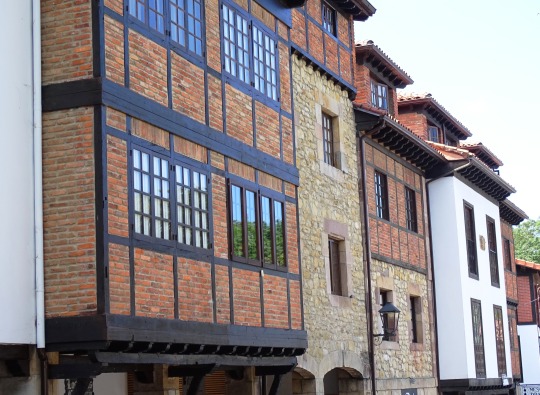
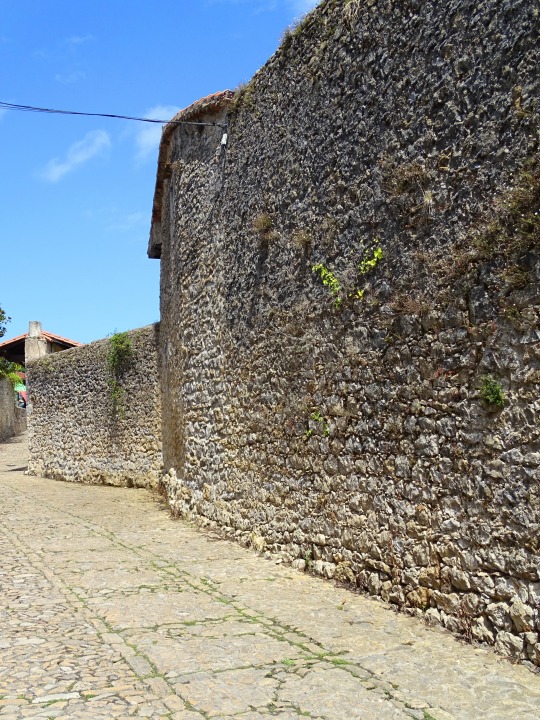




Santillana del Mar, Spain (No. 1)
Santillana del Mar is a historic town situated in Cantabria, Spain. Its many historic buildings attract thousands of holidaymakers every year.
There is an old saying that Santillana del Mar is The Town of Three Lies, since it is neither a Saint (Santo), nor flat (llana), nor is it by the sea (Mar) as implied by its name. However, the name actually derives from Santa Juliana (or Santa Illana) whose remains are kept in the Colegiata, a Romanesque church and former Benedictine monastery. The UNESCO World Heritage site Cave of Altamira is nearby.
Source: Wikipedia
#Casco Histórico de Santillana del Mar#Santillana del Mar#C. de Antonio Niceas#Town of Three Lies#old town#Cantabria#Torrelavega#architecture#travel#Spain#Northern Spain#Southern Europe#original photography#summer 2021#small town#cityscape#street scene#alley#cobblestone#stone wall#street light#España#vacation#flora#historic buildings#landmark#tourist attraction#façade
3 notes
·
View notes
Photo
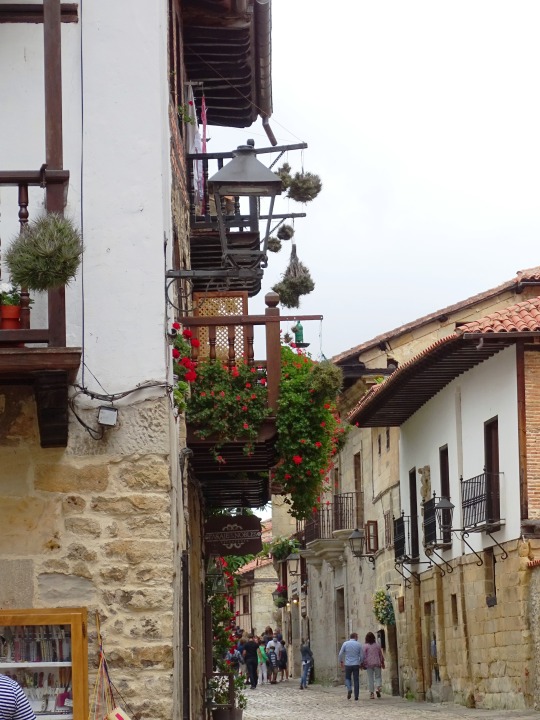
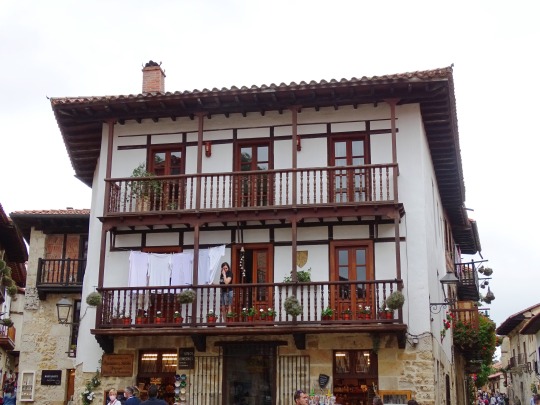



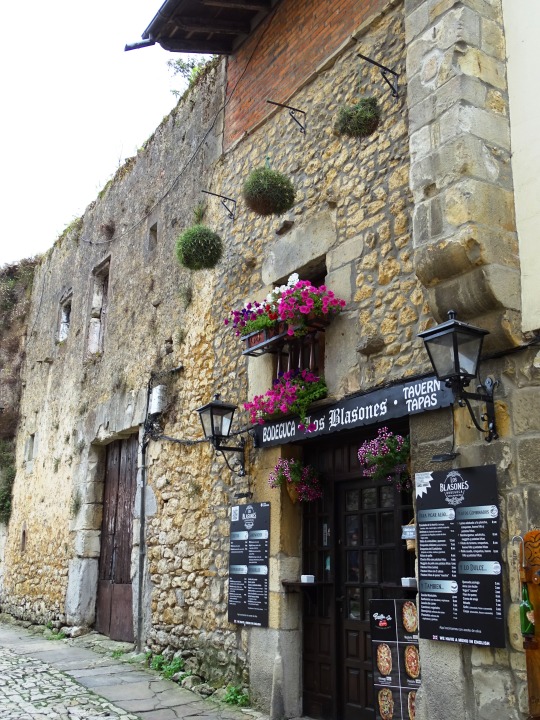
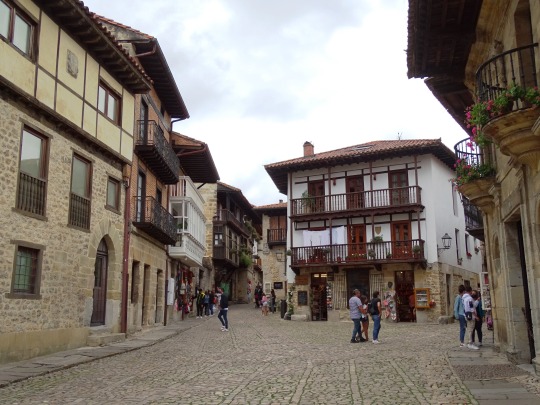



Santillana del Mar, Spain (No. 18)
Barreda-Bracho Palace, also called Casa Barreda-Bracho or Barreda Palace. Since 1944 it is currently the Parador Nacional Gil Blas. It is in the Plaza de Ramón Pelayo. It is a baroque style building erected in the late seventeenth century. The lineage of the Bracho was related to the Barreda, hence the name by which it is known.
City Hall. Located in the Plaza Ramón Pelayo, in a baroque palace. It is remarkable its cast iron balcony with a shield at the top.
Houses of the Eagle and the Vine or of the Eagle and the Parra. They are next to the Town Hall, in the same square. They are two different buildings attached. The Casa de la Parra is so called because it had a large vine on the façade; is a Gothic building of the early sixteenth century. The house of the Eagle or the Estrada is from the seventeenth century. It shows the coat of arms of Estrada and Tagle on its façade. It is currently an exhibition hall of the Regional Government. In front of these houses there is a bison, sculpture of Jesús Otero.
House of Bustamante. It is located at Calle de la Carrera, 7. It dates from the late seventeenth century-eighteenth century. It is a high-rise building that has pulpit balconies. On its façade you can see the coat of arms of the Bustamante.
Torre de los Velarde. At the end of Calle de la Carrera. Old house-tower of the fifteenth century, in ashlar stone with two Gothic doors.
Source: Wikipedia
#Torre de los Velarde#Casco Histórico de Santillana del Mar#Santillana del Mar#Town of Three Lies#Cantabria#Torrelavega#travel#vacation#original photography#architecture#cityscape#pedestrian zone#cobblestone#street scene#alley#tourist attraction#landmark#Northern Spain#España#Southern Europe#flora#Spain#balcony#lantern#summer 2021
4 notes
·
View notes
Photo
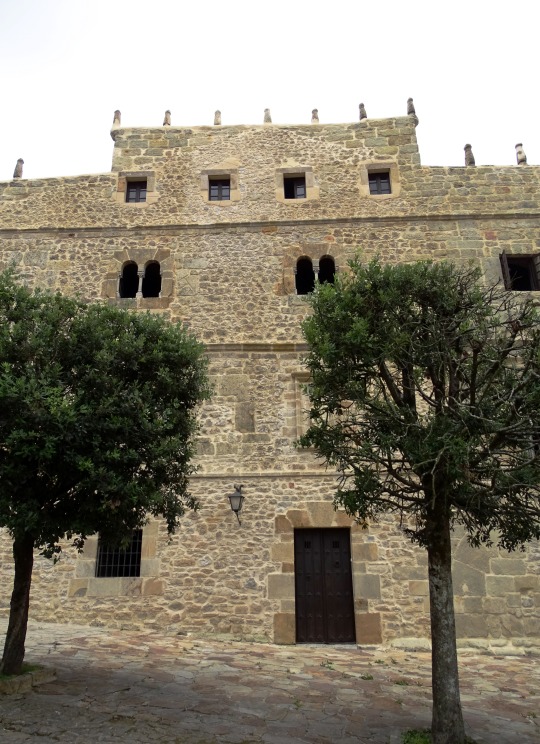








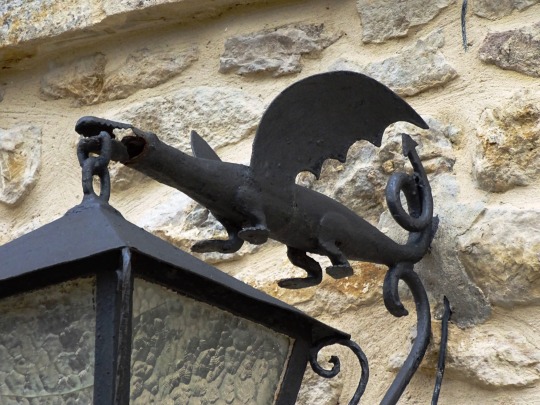
Santillana del Mar, Spain (No. 9)
The palace of Velarde, also called the palace de las arenas, is a building located in the Plaza de las Arenas in Santillana del Mar (Cantabria, Spain). It was completed in the mid-sixteenth century for Alonso de Velarde.
Its architecture is from the first Renaissance. It has rhythmic windows and a pinnacle crowning. The main room is lined with a plinth decorated with Plateresque motifs.
It was built in the sixteenth century by Alonso Velarde, scion of a powerful local lineage. He was the younger brother of Rodrigo Fernández Velarde, who built the house of the Canton in the same town, and son of another Rodrigo or Ruy Fernández Velarde and María Fernández de Villa, patrons of the chapel of San Juan de la Colegiata, which they testified in 1528. The palace succeeded each other in the lineage of Velarde and remained in his descendants until the early twentieth century. The last hereditary owner was María García de la Llata, that in 1915 he sold it to the writer Ricardo León. Then it was bought by Fernando de la Cerda, Duke of Parcent, who undertook a vast rehabilitation. The duke died childless and inherited the palace his widow, Trinidad von Scholtz Hermensdorff, a noted patron and art collector. The Duchess left as heir her daughter from a previous marriage: Piedad de Yturbe, Marchioness of Belvís de las Navas, and from this there was the palace her son Prince Alfonso de Hohenlohe, who died in 2003. In 2008 it was put up for sale by the famous Yale University doctor, Francisco Guerra.
Source: Wikipedia
#Palacio de Velarde#Casa de Alonso Gómez del Corro#palacio de las Arenas#Renaissance style#Alonso Velarde#street lamp#lantern#dragon#architecture#Town of Three Lies#Santillana del Mar#Cantabria#España#Casco Histórico de Santillana del Mar#Northern Spain#Southern Europe#old town#original photography#cobblestone#street scene#landmark#tourist attraction#summer 2021#travel#vacation
3 notes
·
View notes
Photo
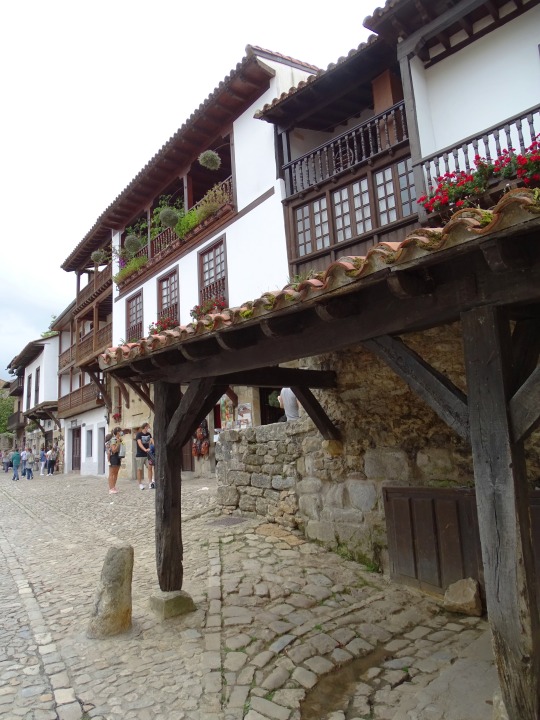

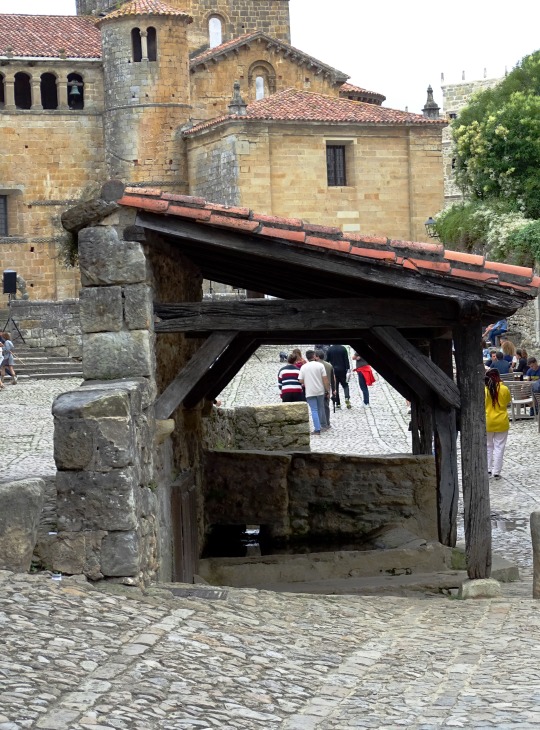
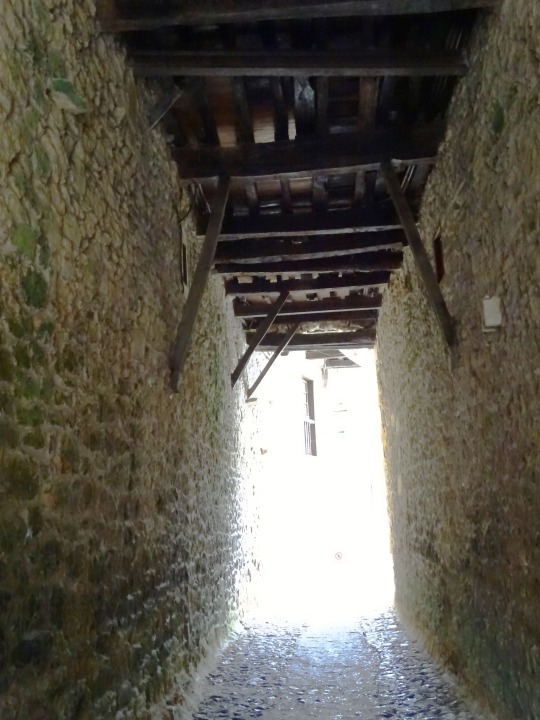
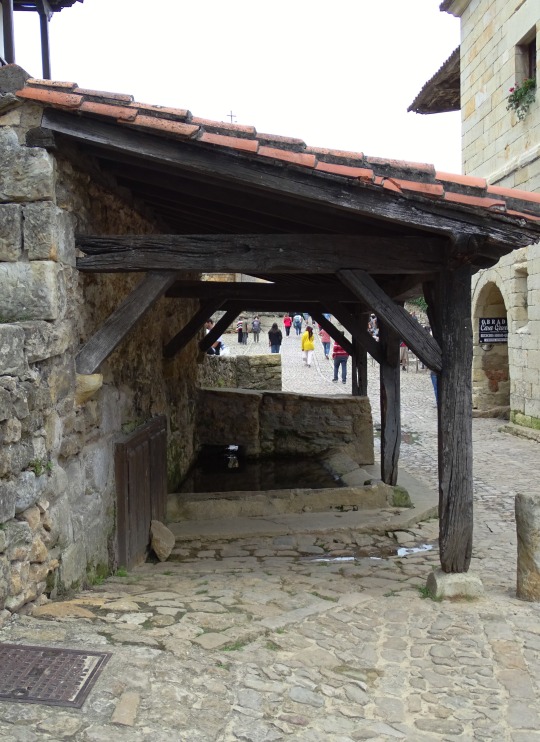


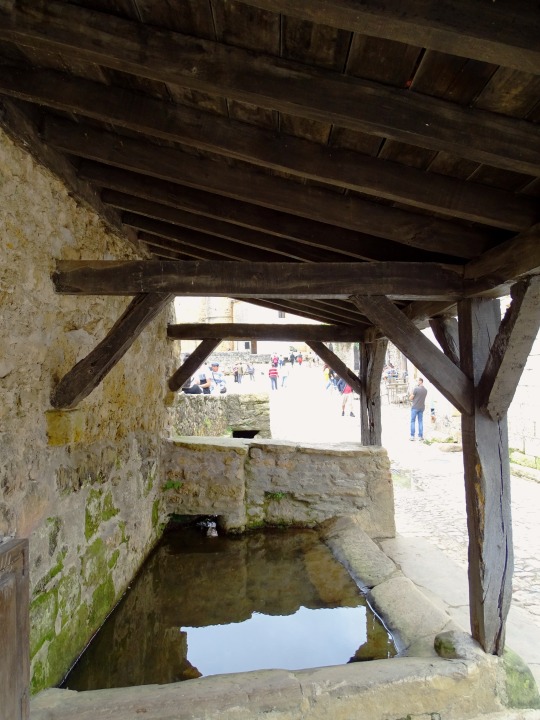


Santillana del Mar, Spain (No. 7)
At the beginning of the 19th century, Santillana, like other towns in northern Spain, prided itself on being full of noble lineages, although as the cliché goes, their surnames did not imply intrinsic wealth. Being the majority, it is assumed that there was a tolerance towards work, despite the fact that the nobles were prohibited from working with their hands, so if they did not, they were forced to emigrate or live in poverty. It was these hidalgos who took over the administrative positions and the representation of the town in higher bodies. They were also the ones who owned the land, with most of the peasants having to rent or work for them.
In 1833 the town hall of Santillana was established, which also had its own judicial district until 1840, when part of it passed to the Torrelavega district and another part to San Vicente de la Barquera . Despite the decline of Santillana, selective tourism began to be generated due to the fact that various politicians, writers and well-read travelers wrote about the town at that time.
Source: Wikipedia
#Fuente Calle del Río#Calle del Río#Town of Three Lies#Collegiate Church of Santa Juliana#Cantabria#Torrelavega#Northern Spain#Casco Histórico de Santillana del Mar#Santillana del Mar#old town#vacation#travel#summer 2021#tourist attraction#landmark#cityscape#street scene#cobblestone#alley#nature#flora#flower#Southern Europe#España
3 notes
·
View notes